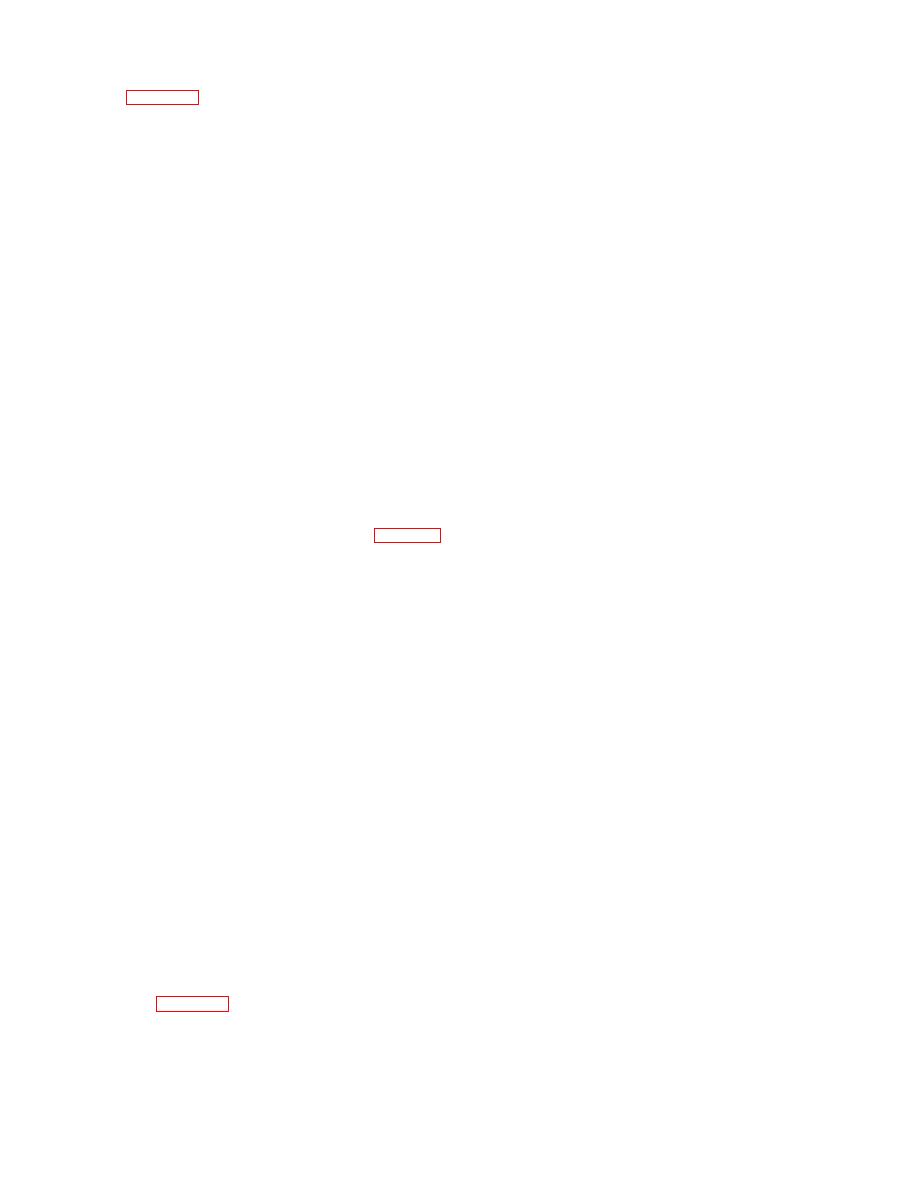
| Tweet |

Custom Search
|
|

|
||
 TM 55-1905-217-34
Key to figure 3-31.
1. Blower mounting bolt
19.
Bolt
2. Plain washer
20.
Rotor drive hub
3. Oil seal
21.
Rotor drive hub plate
4. End plate screw
22.
Plain washer
5. Iockwasher
23.
Lock washer
6. Drive coupling
24.
Bolt
7. Front end plate cover
25.
Bolt
8. Bolt
26.
Lockwasher
9. Lockwasher
27.
Washer
10. End plate cover gasket
28.
Upper rotor gear (R. H. helix)
11. Bolt
29.
Upper rotor (R. H. helix)
12. Bolt
30.
Lower rotor (L. H. helix)
13. Bearing retainer
31.
Rear end plate
14. Bearing (roller), front
32.
Ball bearing
15. Front end plate
33.
Shim (for timing motors)
16. Blower housing gasket
34.
Lower rotor gear (L. H. helix)
17. Blower housing
35.
Fuel pump cooling disc
18. End plate cover
36.
Plate to gear spacer
c. Cleaning and Inspection.
(1) Clean all metal parts with cleaning solvent FED. SPEC. PD-680 and dry thoroughly.
(2) Wash all of the blower parts in clean fuel oil and dry them with compressed air.
(3) Examine the bearings for any indications of corrosion or pitting. Lubricate each bearing with light engine oil;
then, while holding the bearing inner race from turning, revolve the outer race slowly by hand and check for rough spots.
NOTE
The double-row ball bearings are pre-loaded and have no end play. A new double-row
bearing will seem to have considerable resistance to motion when revolved by hand.
(4) Check the oil seal rings, carriers and collars for wear and scoring. If worn excessively, they must be replaced.
Inspection of the type oil seal is covered in paragraph 3-9 (10).
NOTE
When a blower with lip type oil seals is being reconditioned, the installation of new seals is
recommended. Oversize oil seals and oil seal spacers are available in the blower kit to
replace the standard oil seals when the blower rotor shafts are grooved.
(5) Inspect the blower rotor lobes, especially the sealing ribs, for burrs and scoring. Rotors must be smooth for
efficient operation of the blower. If the rotors are slightly scored or burred, they may be cleaned up with emery cloth.
(6) Examine the rotor shaft serrations for wear, burrs, or peening. Also, inspect the bearing and oil seal contact
surfaces of the shafts for wear
and scoring.
(7) Inspect the inside surface of the blower housing for burrs and scoring. The inside surface must be smooth for
efficient operation of the blower. If the inside surface of the housing is slightly scored or burred, it may be cleaned up with
emery cloth.
(8) Check the finished ends of the blower housing, for flatness and burrs. The end plates must set flat against the
blower housing.
NOTE
The finished inside face of each end plate must be smooth and flat. If the finished face is
slightly scored or burred it may be cleaned up with emery cloth.
(9) Examine the serrations in the blower timing gears for wear and peening; also check the teeth for wear, chipping
or damage. If the gears are worn to the point where the backlash between the gear teeth exceeds .004", or damaged
sufficiently to require replacement, both gears must be replaced as a set.
(10) Check the blower drive shaft serrations for wear or peening. Replace the shaft if it is bent.
(11) Inspect the serrations inside the rotor drive hub for wear and peening.
(12) Inspect the blower drive coupling spring (pack) and the cam for wear.
(13) Replace all worn or excessively damaged blower parts.
d. Repair.
(1) Replace any damaged or defective parts as required.
(2) Replace gaskets.
e. Reassembly. The lobes on the upper blower rotor and the teeth on its gear from a right-hand helix while the lobes
and teeth of the lower rotor and gear form a left-hand helix. Therefore, a rotor with right-hand helix lobes must be used
with a gear having right-hand helix teeth and vice versa. With this precaution in mind proceed with blower assembly,
referring to figure 3-31. Install the lip type oil seals (3) as follows:
(1) Support the blower end plate, finished surface facing up, on wood blocks on the bed of an arbor press.
NOTE
If oversize oil seals are being used in the blower end plates, use installer J 1682-13 to
install the oversize oil seal spacers on the rotor shafts. (2) Start the oil seal straight into the
bore in the end plate with the sealing edge facing down (toward the bearing bore).
3-43
|
||
 |
||